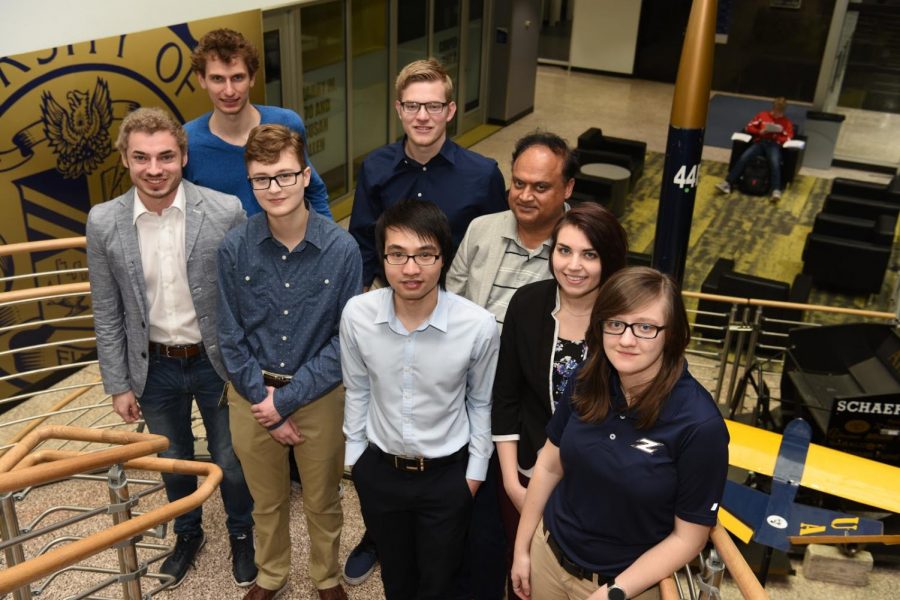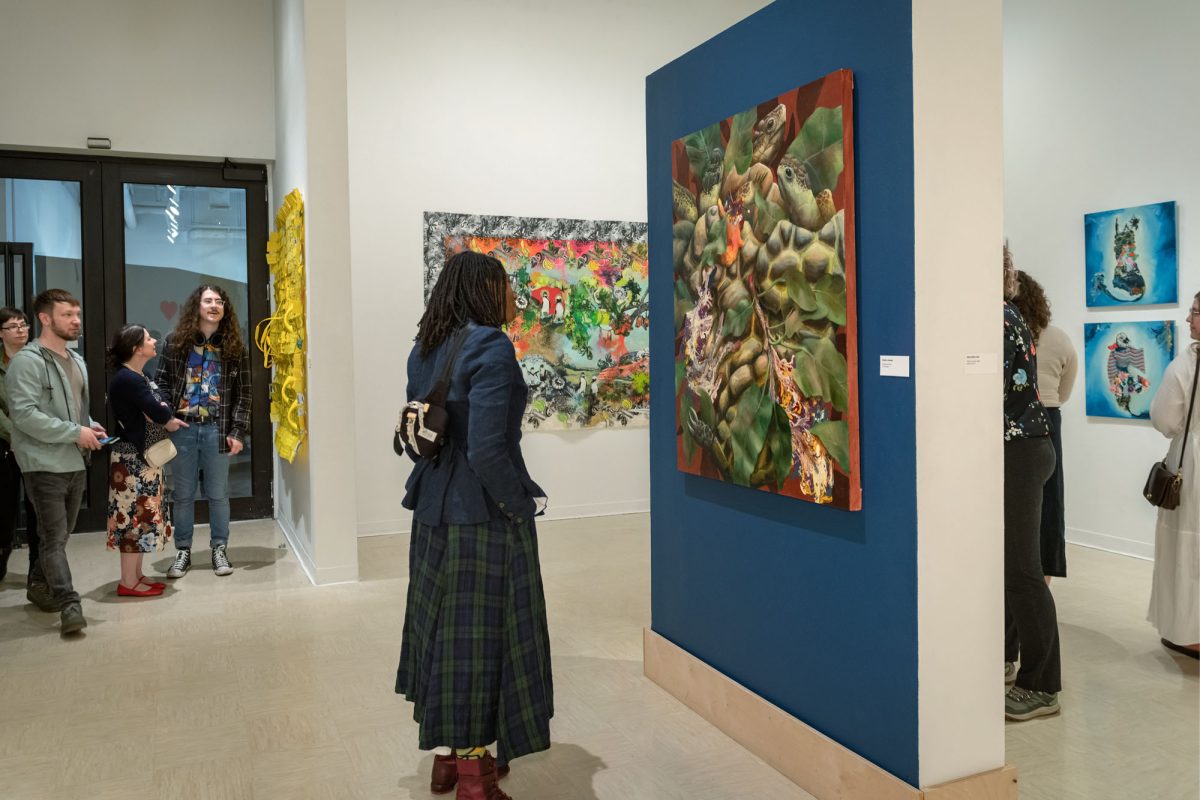NASA Selects UA Engineers to Test Technology for Astronauts
As part of the Spacesuit User Interface Technologies for Students (S.U.I.T.S.) Challenge, the seven-member team traveled to Houston, Texas.
(Video via The University of Akron)
(Image via The University of Akron)
Members of the Virtual Environments for Space Travel team are, in the back row, from left, Thibaut Houette, Caleb Dyck and Dr. Shiva Sastry, and in the front row, from left, Joshua Foss, Erin Michaud, Bach Tran, Sarah Medved and Alycia Riese.
April 19, 2019
For the second year in a row, NASA has invited a team of students from the College of Engineering and Buchtel College of Arts and Sciences to travel to the Johnson Space Center in Houston, Texas, from April 15 to 19.
The University of Akron’s “Virtual Environments for Space Travel” (VEST) team tested designs of a helmet-based, augmented reality (AR) as part of NASA’s Spacesuit User Interface Technologies for Students design challenge.
The leaders of this year’s VEST team are Bach X. Tran, a second-year doctoral student in electrical and computer engineering, and Sarah Medved, a fourth-year electrical engineering major.

Bach Tran interacts with virtual images on the Microsoft HoloLens.
Information from these student-designed AR environments are intended to assist astronauts with the information, communication and performance of multiple tasks, the NASA SUITS website said.
According to a Q&A from the College of Engineering, these new systems are “an important aspect of Digital Futures, an umbrella phrase that collectively refers to new and emerging technologies that are important for the future.”
With successful results from testing, VEST’s prototype could potentially be used to aid a future NASA exploration mission or spacewalk, a University press release said.
Astronauts currently rely on voice communication from mission control, from which they receive instructions and procedures for their spacewalks.
Through the use of AR-capable helmets, astronauts may have greater success in extravehicular activities (EVA) and more because of immediate access to instructions, procedures and other important information, the press release said.
Dr. Shiva Sastry, the team’s advisor and director of strategic initiatives and professor of electrical and computer engineering at UA, said VEST has made modifications to the system based on lessons from the previous year.
“We are honored and thrilled to have this awesome learning opportunity for our students and to represent the University again,” Sastry said.
The team’s design was tested in NASA’s Human Integrated Vehicles and Environments (HIVE) facility, which is used to design and construct human interfaces for testing.
During the demonstration of VEST’s prototype, a test subject wore “thick gloves and a head display to complete tasks that are similar to those performed by astronauts during spacewalks,” the press release said.
For the last semester and a half, the seven-member team has been meeting during Five-Star Fridays in order to make refinements and adjustments to their display system prototype.
According to the press release, the team’s modifications to their design include:
- An improved safety display system, which lets astronaut know whether it is safe or not safe to conduct a particular mission.
- An updated display of telemetry data, which alerts an astronaut to low oxygen levels or sudden increases of temperature in his or her space suit.
- An improved navigation system that, displaying an arrow, better guides astronauts through the worksite.
- A new framework for storing instruction data for an EVA on an external database, located in the spaceship or ground stations, rather than on the HoloLens, which has limited memory space.
Overall, both Tran and Medved said this project and working with VEST has been an opportunity that has been rewarding in several different ways.

Sarah Medved demonstrates the “augmented reality” display system.
“Working on this project gives me a huge advantage of diving into new technology,” Tran said. “We realized a great deal of opportunities of AR in the near future and identified the challenges and solutions.”
“My team members have made this whole experience very rewarding, and Dr. Sastry has been an awesome advisor, always pushing us to try bigger and better things,” Medved said.












